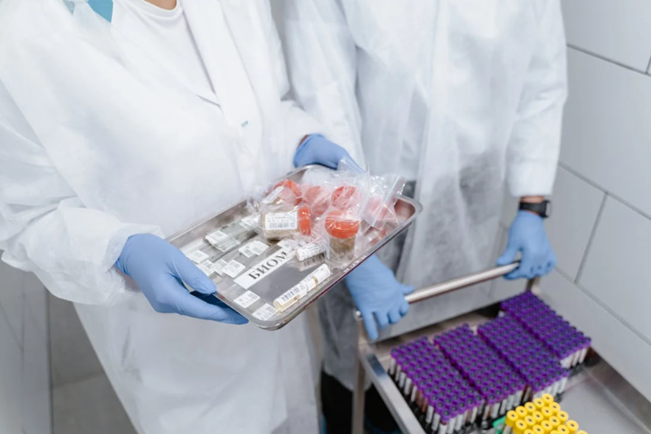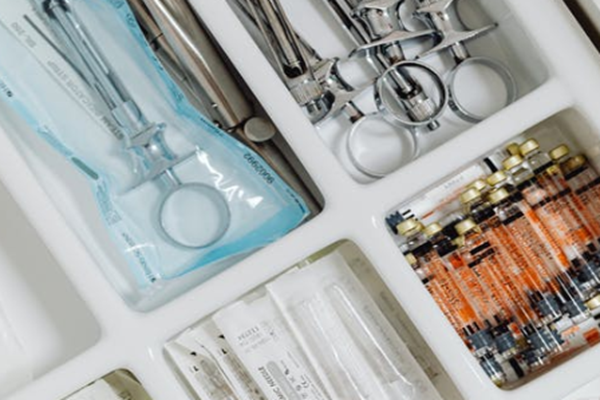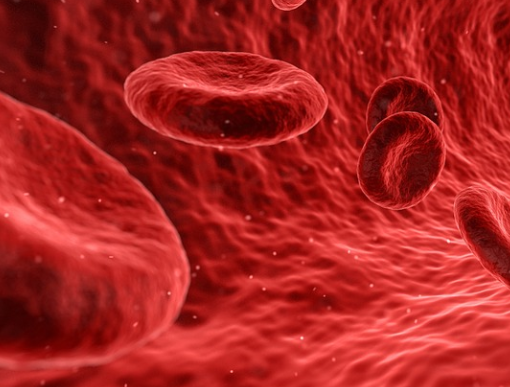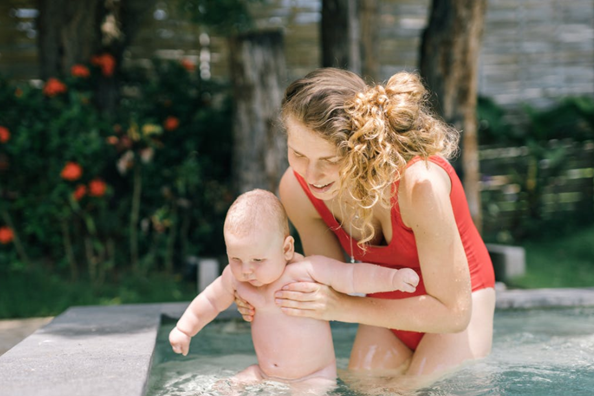
2025-05-20 14:21:53怀孕知识点击:64
Low tempature banking is now a routine component of ART (1). Cryopresvation refs to the storage of viable cells at low tempature (normal at -196℃). Cells are prone to damage during the cooling piod by three mechanisms: (a) chilling injury that occurs between +15 and -5℃, (b) ice crystal formation between-5 and℃, and (c) fracture damage i.e.,the mechanical effect of solidified fluid within the cell that occurs between-50 and-150℃(2). Storage at -196℃ is the least harmful aspect of the cryopresvation process. The cell has the potential to expience the same injury during the thawing process. Some strategies to prevent this damage include the avoidance of rapid tempature changes and decreasing the wat content of cells.
低温保存是现在辅助生殖技术(ART)的常规组成部分(数据参考见1)。低温保存是指在低温(通常为-196°C)条件下保存活细胞。在冷却期间,细胞容易受到三种机制的伤害:(a)温度在15℃和-5℃之间的冷害,(B)-5℃和℃之间形成冰晶,和(C)断裂损坏,即在-50℃和-150℃之间发生的细胞内凝固液的机械效应(数据参考见2)。低温保存过程中危害较小的情况是在-196℃下储存。细胞在解冻过程中可能遭受同等的损害。防止这种损害的一些策略包括避免温度快速变化和降低细胞的水分含量。
Two basic techniques are employed for cooling of embryos: controlled slow freezing and ultra rapid vitrification (2). Both techniques utilize cryoprotective agents. Cryoprotective agents (CPAs) are used for long-tm presvation of ftilized embryos. CPAs like gcol are small, wat-soluble molecu that sve as antifreeze agents by disrupting hydrogen bonds between wat(1) Pmeable cryoprotectants prevent ice nucleation inside the cytoplasm ofthe cells, while extracellular cryoprotectants prevent ice crystal formation from the extracellular medium surrounding the cells. Non-pmeable cryoprotectants re on drawing wat from the cytoplasm through osmosis(2). Unfortunate, pmeable cryoprotectants have the potential to damage cells by direct advse effects and non-pmeable cryoprotectants may damage cells via osmotic effects. Cryoprotectant toxicity is proportional to its concentration and the duration of exposure(3).
冷却胚胎有两种基本技术:受控缓慢保存和超快速玻璃化保存(数据参考见2)。两种技术都使用了保存保护剂。保存保护剂(CPA)用于长期保存受精卵。保存保护剂例如丙三醇是小的水溶性分子,它们通过破坏水之间的氢键(数据参考见1)起到防冻剂的作用。可渗透的保存保护剂阻止细胞胞质内形成冰核,而细胞外的防冻剂可防止细胞周围的胞外介质形成冰晶。非渗透性保存保护剂通过渗透作用从细胞质中吸取水分(数据参考见2)。不过,渗透性低温保护剂可能有直接损害细胞的副作用损害细胞,而非渗透性低温保护剂可能通过渗透作用损害细胞。低温保护剂的毒性与其浓度和暴露时间成比例(数据参考见3)。
Slow freezing iolves cooling the cell at strict controlled slow rates, allowing wat to leave the cell aft treatment (1). Low concentrations of cryoprotectants are used in this process. Ultimate,this yields dense cytoplasmic viscosity without ice formation. Programmable freezing machines are used and freezing and thawing may take seval hours. The procedure also requires the use of expensive instrumentation. Cose,vitrification iolves rapid cooling of the cells. Transition from ambient tempature to -196°C occurs in s than a second. The cooling rate is above 15,000-30,000℃/minute (4). Cells treated with high doses of cryoprotectants are loaded into a carri and submged into liquid nitrogen. Vitrification essential solidifies the sample into a glass-like state,thus avoiding the formation of both intra-and extracellular Ice (5). While rapid cooling may prevent ice formation and chilling injury,the use of high doses of cryoprotectants may lead to direct injury. Vitrification is s expensive, as it does not iolve expensive instrumentation.Furthmore,this technique is more time-efficient,requiring on seval minutes as compared with 1-2 hours with controlled-rate slow freezing.
缓慢保存需以严格控制的缓慢速率冷却细胞,使水在处理后脱离细胞(数据参考见1)。保存过程中会使用低浓度的低温保护剂,较终会产生稠密的细胞质粘度,而不会形成冰。这个过程中使用了可编程的保存机器,保存和解冻需要几个小时的时间。该过程还需要使用昂贵的仪器。相反,玻璃化保存技术涉及细胞的快速冷却。从周围环境温度到-196℃的转变发生在不到一秒的时间内。冷却速度为15,000-30,000℃/分钟以上(数据参考见4)。将经更高剂量低温保护剂处理过的细胞装载到载体中,然后浸入到液氮中。玻璃化保存基本上将样品固化成玻璃状,从而避免了细胞内外冰晶(数据参考见5)的形成。虽然快速冷却可以防止冰的形成和冷害,但是使用更高剂量的低温保护剂可能会带来直接伤害。玻璃化保存的成本较低,因为它不涉及昂贵的仪器。此外,该技术更省时,只需要几分钟,而控制速率的缓慢保存却需要1-2小时。
Kolibianakis and colleagues recent undtook a meta-anasis of randomized trials comparing slow freezing to vitrification (6). They found that vitrification yielded high post thaw survival rates for cleavage stage embryos (odds ratio (OR): 6.35,95% confidence intval(CI):1.14-35.26) and blastocysts(OR: 4.09,95% CI:2.45-6.84). Howev, ovall pregcy rates did not diff between the two groups (OR:1.66,95% CI:0.98-2.79). Hence,the method of embryo freezing used should depend on the exptise of each ART laboratory.
Kolibianakis及其同事较近对缓慢保存和玻璃化保存对比的随机试验进行了元分析(数据参考见6)。他们发现,对于卵裂期胚胎(优势比(OR):6.35,95%可信区间(CI):1.14-35.26)和囊胚(OR: 4.09,95% CI: 2.45-6.84)来说,玻璃化解冻后的胚胎存活率更高。然而,两组的总妊娠率并无差异(OR :1.66,95%可信区间:098-2.79)。因此,使用何种胚胎保存方法应取决于每个ART实验室的专业能力。
Refence 数据参考:
1. Gosden R. Cryopresvation: a cold look at technology for ftility
presvation. Ftil Stil. 2011; 96 (2) : 264-8.
2. Ata B, Chian RC, Tan SL. Cryopresvation of oocytes and embryos for
ftility presvation for female canc patients. Best Pract Res Clin
Obstet Gynaecol. 2010; 24 (1) : 101-12.
3. Vajta G, Kuwayama M, Vandzwalmen P. Disadvantages and benefits
of vitrification. In Tuck MJ & Liebmann J (Eds.). Vitrification in
assisted reproduction A us's manual and troubhooting guide.
London: Informa UK, 2007,pp.33-44.
4. Liebmann J, Nawroth F, Isachenko V,et al. Potential importance of
vitrification in reproductive medicine. Biol Reprod. 2002; 67: 1671.
5. Vajta G, Kuwayama M. Improving cryopresvation systems.
Thiogenology. 2006; 65: 236-44.
6. Kolibianakis EM, Venetis CA, Tarlatzis BC. Cryopresvation of human
embryos by vitrification or slow freezing: which one is bett? Curr
Opin Obstet Gynecol. 2009; 21 (3) : 270-4.
试管合作联系微信


苏州试管婴儿费用多少?三代试管婴儿治疗过程费用明细解析
苏州做三代试管婴儿的费用因多种因素而异,包括医院等级、医生经验、治疗方案以及患者的个体差异等。一般来说,苏州地区三代试管婴儿的费用大致在10万至20万元患者币之间。这个

国内同性恋试管婴儿之路:上海家庭如何突破生育障碍?
国内同性恋群体在生育方面面临着许多挑战,尤其是在试管婴儿领域。由于目前中国法律法规尚未明确允许同性伴侣进行合法试管婴儿助孕,因此想要实现亲子梦想的同性恋家庭常常需要

重庆单身女性三代试管婴儿费用攻略,如何省钱?
针对重庆单身女性进行三代试管婴儿的费用清单及省钱攻略,以下是详细解答:重庆单身女做三代试管婴儿费用清单术前检查费:约2000元。包括详细的身体检查,确保身体适合进行试管婴儿

成都试管婴儿成功率受哪些因素影响?如何选择合适的试管婴儿技术?
试管婴儿是一种辅助生殖技术,适用于多种原因导致的不孕不育情况。进行试管婴儿所需的基本条件主要包括以下几点:试管婴儿所需条件一、女方条件身体健康:女方需进行详细的身体检